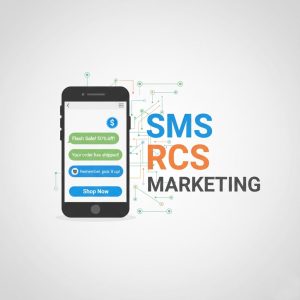How Media Queries Improve Mobile Email Design

Crafting an email that looks great on every device is no small feat. With over 60% of email opens happening on mobile devices, ensuring your emails are optimized for smaller screens is no longer optional. Enter media queries, a key tool in responsive design that helps your emails adapt to different screen sizes seamlessly.
But how exactly do media queries work, and why are they essential for mobile email design? This comprehensive guide explores their role and offers practical tips to elevate your email campaigns.
What Are Media Queries?
Media queries are a feature of CSS (Cascading Style Sheets) that allow developers to apply specific styles based on the properties of the device displaying the content. These properties can include screen size, resolution, orientation, aspect ratio, and more.
When it comes to email design, media queries are particularly useful for adapting the layout, typography, and images of your emails to ensure they perform well across devices—from desktops to smartphones and tablets.
Why Media Queries Are Crucial for Mobile Email Design
1. They Enhance User Experience
Poorly formatted emails ruin the reader’s experience. Imagine receiving an email where text spills off the edge of your screen or where buttons are too small to tap easily. Media queries solve these issues by adjusting layouts and styles for optimal readability and usability on smaller screens.
2. They Improve Click-Through Rates
A mobile-friendly email design increases the likelihood of engagement, such as clicks on links or calls to action. A study by Campaign Monitor found that mobile-optimized emails have a 15% higher click-to-open rate than their non-optimized counterparts.
3. They Reduce Unsubscribes
If users constantly struggle to read or interact with your emails on their devices, they’ll eventually unsubscribe. Smoothly adapting your designs for mobile can help retain your subscribers by offering consistent quality and functionality.
4. They Keep Your Brand Look Professional
When your emails consistently look good regardless of the device, it reinforces a positive perception of your brand. Media queries play a vital role in aligning design consistency with brand values, demonstrating attention to detail.
Understanding the Anatomy of Media Queries
Here’s an anatomical breakdown of how media queries typically look and function:
Basic Syntax
A media query starts with @media, followed by the conditions that will activate it. For example:
“`
@media (max-width: 600px) {
body {
font-size: 14px;
}
}
“`
- @media: Declares the conditional styling rule.
- (max-width: 600px): The condition. In this case, the rule applies when the screen width is 600 pixels or less.
- { … }: Contains the styles to apply if the condition is met.
Examples of What You Can Control
Using media queries, you can:
- Adjust font sizes to ensure text remains legible on small screens.
- Change image sizes to prevent photos from overwhelming the layout.
- Rearrange content blocks for better flow on narrower displays.
- Hide or display specific elements to reduce visual clutter on small screens.
Key Media Query Use Cases in Mobile Email Design
1. Scaling Fonts and Adjusting Typography
Emails designed for desktops often use font sizes that are too large or difficult to read on mobile devices. Media queries allow you to scale font sizes, adjust line heights, and even change font families for a mobile-friendly reading experience.
Example:
“`
@media (max-width: 480px) {
h1 {
font-size: 24px;
}
p {
font-size: 16px;
}
}
“`
2. Optimizing Images
Images in desktop emails can quickly become cumbersome on mobile screens, either due to their size or inappropriate formatting. Using media queries, you can resize images or use different images altogether for mobile devices.
Example:
“`
@media (max-width: 480px) {
.hero-image {
width: 100%;
height: auto;
}
}
“`
3. Rearranging Layouts
Layout changes are critical for mobile optimization. Media queries allow you to stack columns, reorient buttons, or reposition elements for better usability on smaller screens.
Example:
“`
@media (max-width: 768px) {
.two-column-layout {
display: block;
}
}
“`
4. Adjusting Buttons for Tapping Convenience
Interactive elements like buttons need to account for finger-tapping versus mouse-clicking. Buttons designed with extra padding and scaling through media queries ensure they remain user-friendly on touchscreens.
Example:
“`
@media (max-width: 600px) {
.cta-button {
padding: 12px 20px;
font-size: 18px;
}
}
“`
5. Managing White Space
Desktop layouts have ample white space, but this can make mobile emails feel cramped. Media queries enable you to fine-tune margins, padding, and spacing for a balanced composition.
Tips for Using Media Queries Effectively
Test Across Multiple Devices
While media queries make your emails more adaptive, thorough testing ensures your design works seamlessly on different devices and email clients. Tools like Litmus and Email on Acid can help.
Prioritize Simplicity
Complex styles are tempting but avoid overcomplicating your media queries. A well-organized stylesheet is easier to maintain and debug.
Use Mobile-First Design
Start by designing with mobile users in mind, then scale up your styles for larger devices. This approach ensures a solid foundation and optimizes performance for your largest audience segment.
Minimize Code Bloat
Keep your media queries clean and avoid redundant styles. Efficiency is critical, as excess code can slow down your email loading time.
Leverage Responsive Frameworks
If you’re short on time, responsive frameworks like Foundation for Emails or MJML provide pre-built solutions tailored for email design.
How to Get Started with Media Queries in Email
Now that you understand how media queries work, incorporating them into your workflow is the logical next step. Start by:
- Auditing your current email designs for mobile usability issues.
- Setting up a basic CSS file with media queries for font adjustments, layout changes, and interactive elements.
- Testing your emails thoroughly across different devices and email clients to ensure a consistent experience.
Remember, an optimized mobile email experience keeps your audience engaged, your unsubscribe rate low, and your brand looking professional.
Takeaways for Today’s Email Designers
The role of media queries in mobile email design cannot be overstated. From improving user experience to boosting engagement, they significantly enhance the effectiveness of your email campaigns. By incorporating media queries and adopting a mobile-first design strategy, you can meet the needs of your increasingly mobile audience and stand out in crowded inboxes.
Looking for more ways to improve your email designs? Explore our in-depth resources or get in touch with our design experts to optimize your campaigns today.





